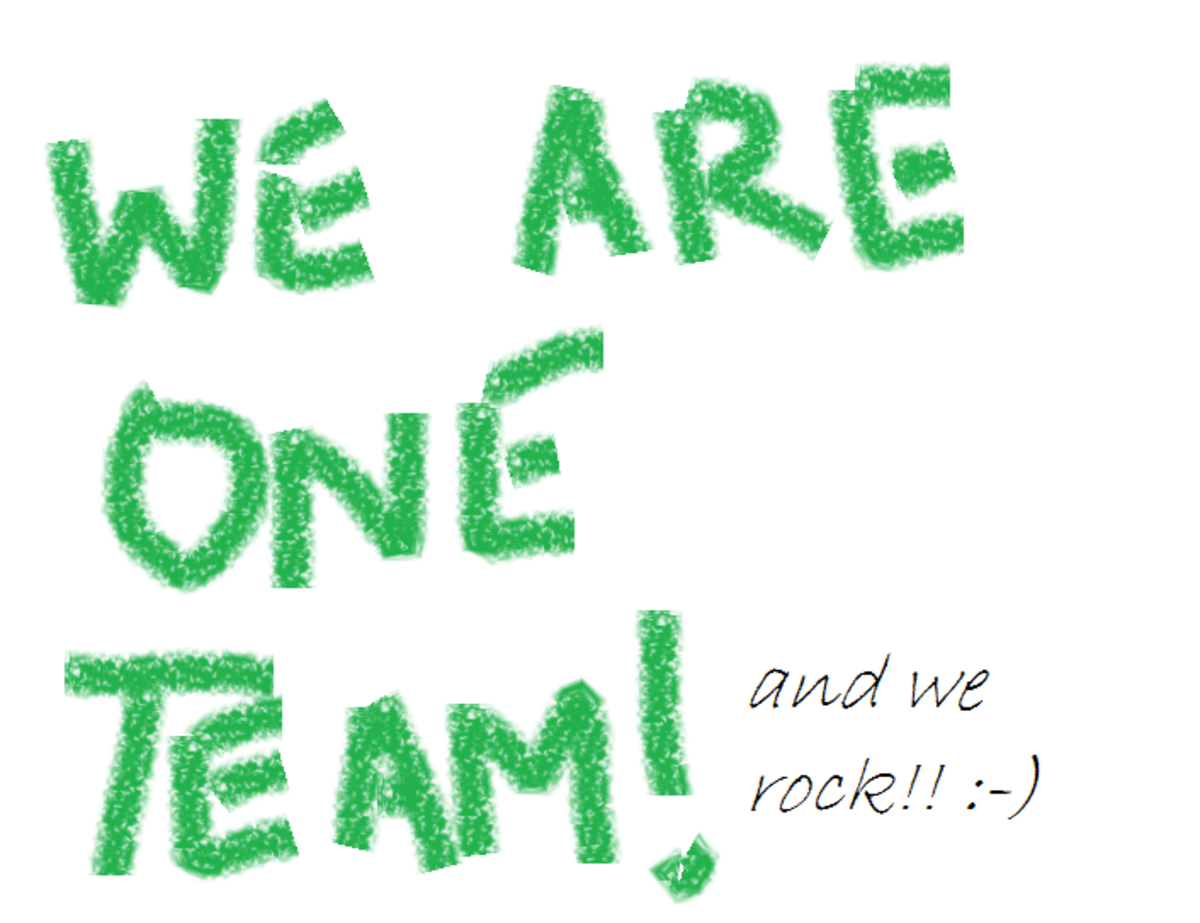Potential Barriers in Leadership during Changing and Challenging Times
Ideas to lead your teams to better success
If you are in charge of leading a large organization of people or just supervise a few people. You will likely relate to just how lonely it can be at the top and just how difficult it is to get the changes needed to move forward during challenging times. Many times it is “casual resistance” to changes that may be against you.
We have come to realize, that as leaders we need to pull back and look at the situation we are in three dimensionally, while continually evaluating the team members, work flow and systems in an organization. With change comes the leaders’ responsibility to reevaluate daily routines, team members’ professional development, and the need to completely reorganize toward new more streamlined procedures.
It is human nature, as teams and relationships develop, that the leader will have a natural tendency to defend and protect their team members, as they do with their own family members. During large culture and system changes, we cannot expect peer-to-peer relationships to overcome different viewpoints and move forward with reorganization efforts.
Many times people already feel overwhelmed and overworked, and just don’t think they have the time to reach out of their comfort zone to make needed changes, even though it may really help them and the organization immensely in the long run.
Probably there have already been several historical changes in your profession to relate to what is currently occurring now. It is good to reflect on those changes to bring forward the positive outcomes that came about after all the doomsayers played the fiddle and tried to convince everyone that it just couldn’t be done, or the idea was the most ludicrous thing that could of ever came from the corporate office. Such talk as “Those bureaucrats just…simply don’t know our people.” Or “They just don’t understand what it takes to do this job”
For an example my historical experience was the transition to computerized billing. Before computers, all accounting and billing was completed on a one-write ledger pegboard manual system. The bill would be handwritten with carbon paper and the under copy would be kept for the office records. At the end of each month’s close, the office managers had to add every column on a ten-key calculator and staple the tape on the ledger to be sure it balanced, before it was sent to home office. Often it did not, and the office manager would sit for hours trying to find a five cent error.
As computerization was introduced, several office mangers excelled as others who were great before suddenly started to fall behind each month as A/R started to increase. As corporate managers started doing visits, they found those who were doing great had put the pegboard system in storage for good and were simply ecstatic at the amount of time they were able to save. Those who were not doing so well were still holding on to the pegboard doing what they always had done, but then because “Corporate” now wanted it on computer they were actually duplicating it again on the computer. It was nearly twice the amount of work than was actually required. Unfortunately, some of the previous people who were considered great office managers just couldn’t make the transition and had to be changed.
With the level of rapid changes that occur year after year, the factors of human dynamics and personalities can play a large part of a team’s overall success. During a large change it’s always better to anticipate all the things that could go wrong, be prepared and be able to identify those things before they sneak up on you to hinder the needed changes.
Casual Resistance Factors
Definition: Casual resistance factors are those which exist in a passive nature preventing an organization from actively achieving overall success. These resistive factors may be presented by one particular employee, or as an ambient that exists throughout the office or an entire organization.
In general, the employee(s) may not even realize they are a barrier and innocently are being resistive. Some may be vocal while others are non-vocal and many never display the thoughts outlined below. Others just don’t like to be told what to do and sit back and become resistant to any needed change (i.e. worried about all the work that already needs to be done, or “they just don’t understand our office”).
These people tend to see the cup half-empty and look for all the reasons of why we should, instead of looking at the glass half-full and saying why not. With the changes occurring in our economy, one thing is for sure, business and new customers are becoming more difficult. New competition is gearing up all around to take on your business market share. Where are you in this thought process?
Categories of Casual Resistant Behavior to watch for:
Resistance towards new business
- Too many hoops they want us to jump through
- They are just too demanding
- Already have “too many” of those types of customers
- Our employees are just not capable of handling that volume right now
Resistance towards different business changes
- The “management” has no clue to the work I already have to get done
- It is too much work to process that little order
- I need that employee to handle other things, we don’t have time to work on something new
Convenience resistance towards business
- Wrong time of day
- Don’t want to have to “deal” with that person
- Don’t have time to put together another quote; they will just reject it anyway.
- Already behind, can’t possibly do another thing today or even this week
- It doesn’t matter, no matter what I say “they” won’t turn in the paper work timely
- I have to do everything myself, and I will just get to it when I can.
- She is just a real “B” today; I’m not even going to approach it.
- It is hopeless; this younger generation just doesn’t care and won’t do it anyway.
- I’m afraid they will walk if I demand too much of them.
- Those people out there just don’t have any common sense.
- I have told them over and over and they won’t document it.
- They just don’t understand. People around here just don’t do it that way.
- Those drivers aren’t going to listen; there is no use in even trying to get them to sign.
- It hasn’t caused problems in the past what is the big rush now?
Staffing resistance
- We are “short” this week, going to be lucky to take care of what we already have.
- That is just a “corporate” thing; the city inspector didn’t have an issue with it.
- The employees are tired.
- Don’t have a truck available for that one.
- Just not going to take any more orders after 3:00 PM
- I don’t “care” what they say, my way is better.
- Not going to use that form, I like mine better
- I don’t have time for all these meetings.
The Glass Lid
Definition: A perceived transparent barrier that one cannot pass through. Demonstrated with laboratory animals when placed in a shallow aquarium with a glass lid, as they attempted to jump out of the aquarium they would hit the glass lid and fall back down. After some time passed, the glass lid was eventually removed and the animals never attempted to jump past that point again.
The factors of casual resistance can play into the perception of some type of transparent barrier existing in a business or organization, as well as real limitations. Many times, a simple fix with a new piece of equipment, additional training, regrouping the employees or a face-to-face meeting can help people realize the changes and why those changes need to occur to stay in business.
Sorting this out can be a real management challenge and why digging for the root cause is always so important. Too many times leaders misdiagnose a problem and never find the root cause.Organizations go bankrupt and out of business because no one could find the root to their problems and pull the organization into the right direction.
It may be a system problem, a training problem, a resource and equipment problem, a support issue, or someone in the food chain innocently sabotaging everything through casual resistance.
A manager will try to manage people by a set of company polices; a leader realizes that people in challenging times need someone to help them lead the way. Leaders can’t resolve complex issues sitting behind a desk and listening to front line supervisors, those may be the casual resistors. Line workers generally don’t feel empowered to make changes, or don’t want to upset peer relationships.
The best way to figure out what is going on is to get out walk through each process that is not working in the organization and look for the barriers that may be inhibiting progress.
Speak with the people on the front line and ask the dumb questions, you will be surprised on what you didn’t know.
The notion that we should expect others and the general public to conform to our rules is also hitting a glass lid. I don’t remember where it was, but in the 1980s a new college campus opened; intentionally, no sidewalks were installed for the students to walk across the campus in order to get to the different buildings for classes.
Instead the faculty decided to wait a few weeks just to see where the students naturally developed paths they chose to walk across the campus, then the sidewalks were installed on those exact paths. The result reportedly saved the college unneeded expense for sidewalks, but the college was able to maintain a beautiful landscape going forward.
The lesson learned from this experiment was the college could have placed the sidewalks, then mandated the students to use them and fought endlessly to place signs, hire additional staff, and created adversarial relationships to keep the students from taking shortcuts across the landscape. Naturally some students would buck the establishment of those rules anyway, just to challenge the authority.
If we adjust to the market needs, many glass lids can be shattered. For example, if we know Fridays will be heavy for orders, then why do we continue to manage with the typical 8-5 management? We know the rush is coming, why not prepare for it?
Categories of the Glass Lid Perceptions
- We can never exceed more than 75 orders a day at that location, it is just too much work, and they can’t handle it.
- We can’t obtain the needed drivers to take care of that many orders.
- We don’t have a large enough truck to hold any more orders.
- I don’t care what they say, “the previous owners” told us we couldn’t do it that way.
- Our warehouse just won’t hold any more.
- That purchasing clerk is just a pain; she always sends order to us with half the paper work late on a Friday.
- I don’t like dealing with that foreigner, my employees don’t understand him and he is just mean to them.
In Summary
Your people are probably already working hard and already going the extra mile. It may clearly seem that there is absolutely nothing else humanly possible that can be done. Some of the world’s greatest inventions came out of ordinary people finding an easier way to do something. People working peer-to-peer in any setting may feel limited and sometimes intimidated in speaking up.
A leader can challenge that group to get out of the box, solicit feedback to look at how to improve the process, and ask how can we make this work better, eliminate duplicating, work smarter, and still improve? It is time consuming, which feels counterproductive to start with, but once a process is streamlined the tension and daily stresses can dramatically decrease.
How many of your team members are still holding on to the old way, while trying to look like they are doing it the new way? How much time and energy are you spending on doing it as we have always done before, while the playbook has changed?
It only takes a small, undetectable virus to completely bring a computer to a snails pace. Do you have casual resistance, or a glass lid actively creating a virus working against you and the organization?








